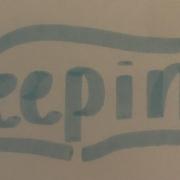
Why Arts?
What are the benefits of having the arts taught in school?
Arts Education is critical for helping students to develop creativity, critical thinking and problem-solving abilities. - Megan Chernin
It is believed that children and young people who participate in the arts for at least three hours, three days a week for a year are more likely to be recognized for academic achievement. Performing better in literacy, maths and science assessments. Participation in the arts builds confidence, creativity, develops questioning skills, promotes open mindedness and develops an appreciation of the complexity of drawing, painting, music and dance. Plus, exposure to the arts gives children every opportunity to succeed making them better problem solvers thinking outside the box and makes for a more well-rounded learner. And wouldn't you agree making the world a more interesting and beautiful place?
So how do children feel about the arts? I interviewed several year 5 students. Their responses were very interesting. The consensus among the students was that the arts are very important and should be taught more in school.
Freya said, “I think it is important because it’s like free learning and it’s never wrong.” She was focusing mainly on art. Rosie stated, “the arts have always been there and is another way for me to express myself.” Maya added, that she felt that the arts should be taught more in schools, saying, “participation in the arts can help children who have strong emotions by assisting them to express these emotions in a more constructive way.”
With such convincing research on how the study of the arts has on the attainment of students learning particularly children who are disadvantaged the DfE has implemented many of the recommendations from the Darren Henley Report investing many resources into the development of Cultural Education in England by funding the subjects of music, dance, art and design, DT and media studies. So next time you think your child’s teacher is sending home too much creative homework, stop and think of all the benefits your child is receiving from participating in these creative opportunities.



























